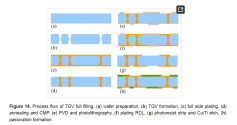You are using an out of date browser. It may not display this or other websites correctly.
You should upgrade or use an alternative browser.
You should upgrade or use an alternative browser.
Chinese semiconductor thread II
- Thread starter vincent
- Start date
SMMB construction was started last year. The size is around half of football field.I saw this construction of a SSMB-EUV on youtube, can anyone tell me if its genuine.
SMIC is currently building 340,000 wpm of 28nm capacity. They could use the 28nm machine if it existed.SMEE's 28nm capable scanner is not good enough and they are moving too slow.
Other companies like Nexchip will also be building some 28nm capacity. It is required for high-end DDICs, automotive MCUs, IoT, etc.
They could stop Chinese companies from using US IP and patents. Unfortunately SiFive recently submitted a patent for instruction fusion on RISC-V.RISC-V restrictions? How would this work?
So that could be an issue. It will be hard to implement high-end RISC-V processors without this.
The best way to counter this will be for Chinese RISC-V companies to develop their own patents.
Last edited:
"Chips made on "glass plates""
View attachment 128588
Is from this CCTV show. Is about Through Glass Vias for connecting 3D chips.Why on earth are you constantly posting screenshots from douyin? Just post sources such as websites instead of a low effort screenshot.
Thermo-Mechanical Reliability Study of Through Glass Vias in 3D Interconnection
Abstract
Three-dimensional (3D) interconnection technology based on glass through vias (TGVs) has been used to integrate passive devices, and optoelectronic devices due to its superior electrical qualities, outstanding mechanical stability, and lower cost. Nevertheless, the performance and reliability of the device will be impacted by the thermal stress brought on by the mismatch of the coefficient of thermal expansion among multi-material structures and the complicated structure of TGV. This paper focuses on thermal stress evolution in different geometric and material parameters and the development of a controlled method for filling polymers in TGV interconnected structures. In addition, a numerical study based on the finite element (FE) model has been conducted to analyze the stress distribution of the different thicknesses of TGV-Cu. Additionally, a TGV interconnected structure model with a polymer buffer layer is given to solve the crack problem appearing at the edge of RDL. Meanwhile, after practical verification, in comparison to the experimental results, the FE model was shown to be highly effective and accurate for predicting the evolution of stress, and several recommendations were made to alleviate stress-related reliability concerns. An improved manufacturing process flow for the TGV interconnected structure was proposed and verified as feasible to address the RDL crack issue based on the aforementioned research. It provides helpful information for the creation of highly reliable TGV connection structures.

Loongson CPU's next products are 3B6600 and 3B7000
in past decade, CPU single core general capabilities are up 20%
frequency up 2-3x
design capability up 5-10x
Look at that, they are developing LA664E and LA864 core, are they going 8 wide CPU core?
3B6600 and 3B7000 CPu according to this will be 3.0GHz and then 3.5GHz
Loongson CPU's next products are 3B6600 and 3B7000
in past decade, CPU single core general capabilities are up 20%
frequency up 2-3x
design capability up 5-10x
Look at that, they are developing LA664E and LA864 core, are they going 8 wide CPU core?
3B6600 and 3B7000 CPu according to this will be 3.0GHz and then 3.5GHz
A question here: How does Loongson's x86 license work? Can Intel revoke that? Is the license only limited to a certain version (like, correct me if I am wrong, Huawei has ARM v8 license).
China's chip team has developed the third generation of "glass perforation technology", which uses glass wafers to replace traditional silicon wafers, which can reduce costs by about 50%.
